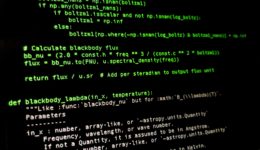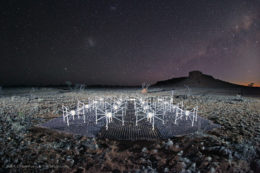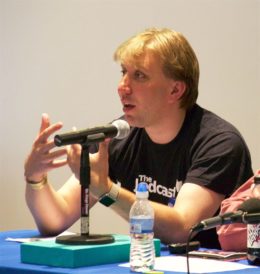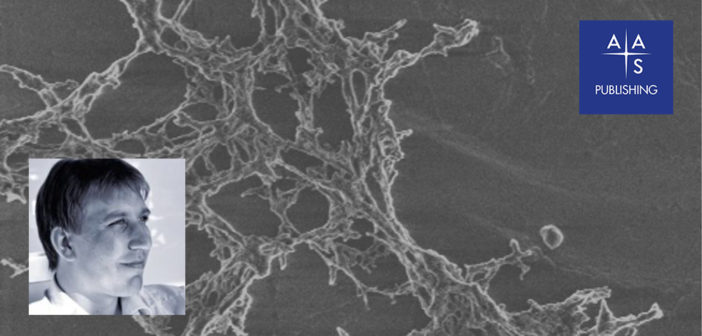In a small organization like the American Astronomical Society, everyone involved wears multiple hats. Chris Lintott — AAS Journals Lead Editor and Editor of Research Notes of the AAS — takes this paradigm to the extreme, adding his multiple roles at the AAS to an already impressively varied career.
Taking the Lead
“It turns out that one should be careful about expressing opinions,” Chris Lintott jokes as he explains how he became an AAS editor. In 2016, he challenged the AAS Journals’ 50-year-old policy to reject manuscripts describing software. AAS publishing listened — and then offered him the role of Lead Editor for the newly created Laboratory Astrophysics, Instrumentation, Software, and Data journal corridor.

AAS journals welcome the submission of articles describing astronomical software. [astropy]
Since the change, Chris has been glad to see many software-related articles published by major collaborations; now he hopes to start seeing articles from people who write code for their own or their group’s use. “Think about spending a rainy Friday afternoon writing a three-page paper describing the software that [you’ve] worked hard on,” Chris suggests; in the modern era, this should be documented and citable in the same way that the science that’s produced with the software is!

Radio interferometric arrays like the MWA generate vast amounts of data. [Dr. John Goldsmith/Celestial Visions]
RNAAS: A New Type of Publication
As if this didn’t keep him busy enough, in October 2017 Chris took the lead on an idea that had been proposed as part of discussions about the future of AAS publishing: the development of an AAS journal where scientists could rapidly publish non-refereed, short results. Chris is the editor of the resulting Research Notes of the AAS, which provides a landing place for negative results, brief student projects, abandoned data, and more.
Since RNAAS’s launch, the journal has been embraced by the community. RNAAS has published nearly 500 articles in its 2.5 years, and almost half of these have been cited — a remarkably high fraction, given the informal nature of the journal.
“The thing that surprised me is the diversity of things that we’ve had [submitted],” Chris explains. “We’ve had the last observations with a particular telescope recorded for posterity. We’ve had how-to guides for complex statistical themes. We’ve had topical arguments about things like ‘Oumuamua, which helpfully shot through the solar system just as we were starting.”
Chris welcomes the diversity of RNAAS articles as well as those submitted to his AAS journals corridor. Wearing his two editor hats, he starts each day by checking on recent submissions. “To have a cup of coffee in the morning and not know what I’m going to read about is really exciting.”
Carving a Blurred Niche
What’s Chris doing when he’s not reviewing journal articles for the AAS? Though he initially studied the chemistry of star formation, his research now focuses on galaxy formation: in particular, what a large population of citizen scientists can help us to learn about galaxies and their formation. Chris runs Galaxy Zoo — which he describes as “a side project that went bonkers” — and the broad range of Zooniverse citizen-science projects that have grown out of it.

AAS Editor Chris Lintott at Jodrell Bank Observatory, UK. [Mike Peel]
Keep an eye out for Chris — wearing any one of his many hats — at upcoming AAS meetings. And send him your articles so he can read them over his morning cup of coffee!


1 Comment
Pingback: From AAS NOVA: “AAS Publishing News: An Interview with Chris Lintott” | sciencesprings